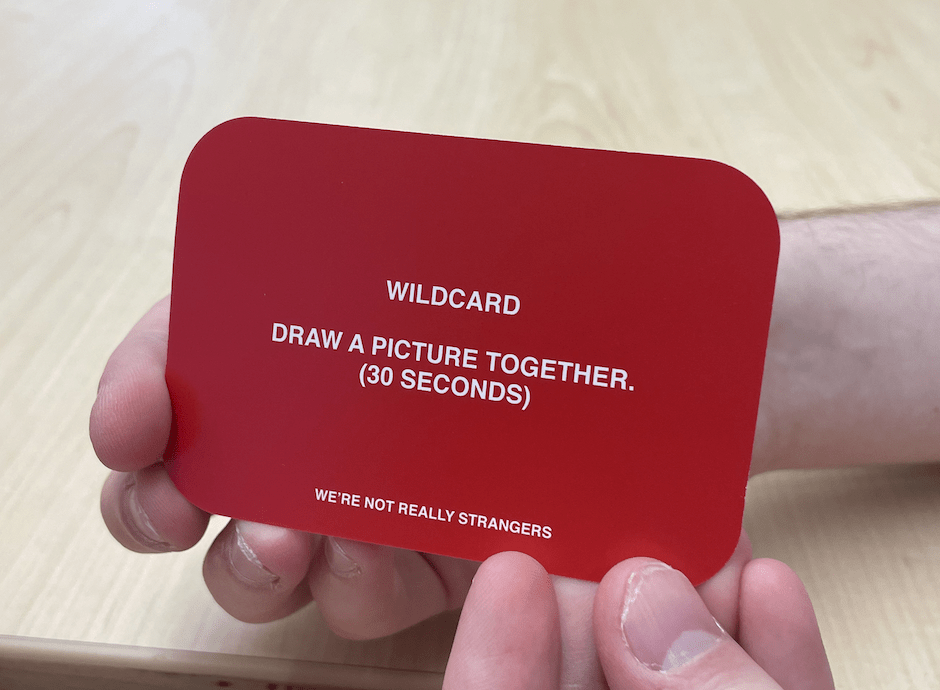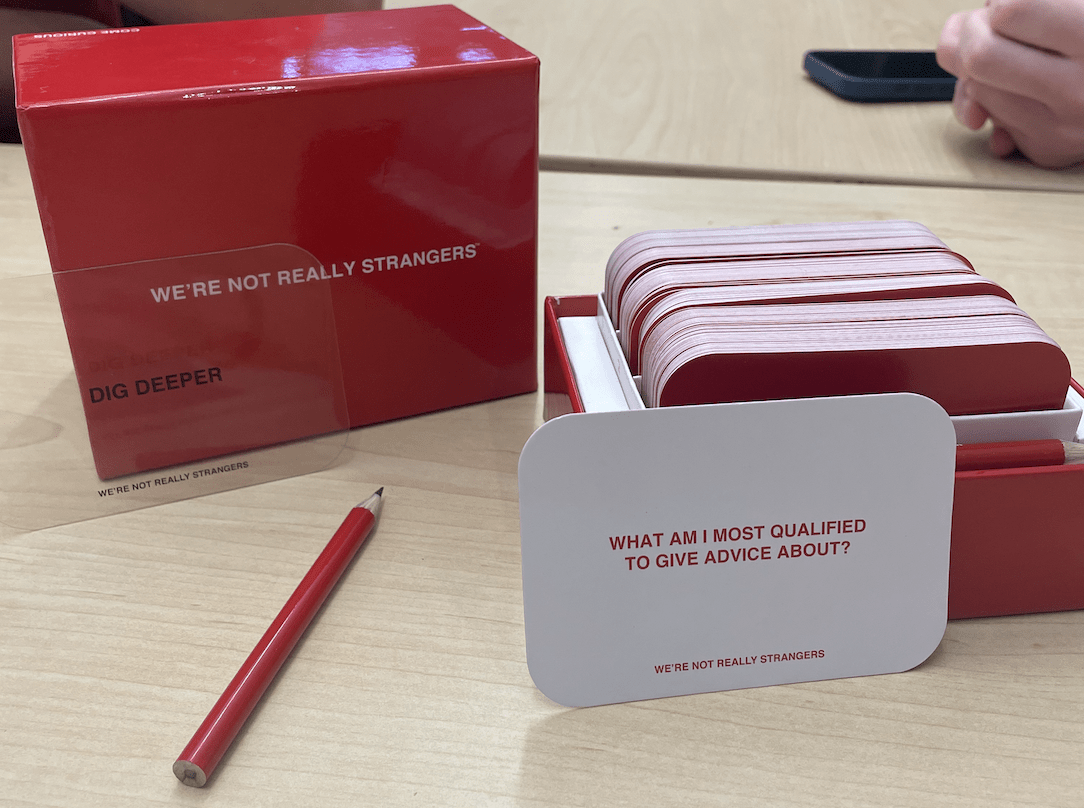
![]()
![]() We’re Not Really Strangers Game Pieces
We’re Not Really Strangers Game Pieces
We’re Not Really Strangers is a game that works to deepen existing connections between players. Because some of the questions can touch on sensitive, more mature topics, it is recommended for those in their late teens or older. It was founded by Koreen Odiney, and is typically played with physical cards, though many online versions exist. It promises discovery of your fellow players, and expression — you learn a lot about yourself through thinking critically about each of the questions on the cards.
Interestingly, the game is optimized for two players. This allows players to really focus on one relationship throughout the game. However, there is a multi-player version for 3-6 people. The boundaries are physical: all players must sit in a circle, to keep conversation centrally focused. The main portion of the game is within rounds, defined as levels (level 1, 2, and 3). Each player selects one card from each level, and asks the question to the group.

Level 1 Example Card
Then, the next player repeats that action. The round ends once each player has drawn two cards and presented them to the group. There is not a winner or loser in a single round; cards typically send the group into discussion or storytelling, deepening the connection between players. Though there is not a clearly define winner, this player interaction pattern would fall under unilateral competition, as a single player reads a card’s question aloud and all other players have to answer it.
Though this game is meant for those 15 and above, some of the cards don’t seem to align with that age group. In the image above, even as college students we were stumped by “what I do for a living”. Does this mean student? In that case, we all are in the same position, so it’s odd to answer the question about someone else. This language didn’t seem to align with the young adult audience (under ~22 years old). This is an area of improvement for the game: ensuring relevancy among questions for all players within the specified age group.
There were a few resources that added additional layers to the game. Wildcards allowed players to either come up with their own question, or perform an activity with other players. This allowed players to exercise their creativity, and ideally take their connection to the next level. In playing the game, we didn’t find that all of the wildcards evoked the same feeling. For instance, just before drawing the card shown below, we had finished a somewhat deep, emotional conversation about our relationships with our moms. Then, we had to jump to drawing pictures. This activity felt juvenile compared to the conversation we had immediately before, so it sort of threw off the vibe of the game. This disrupted the dynamics of the game, and is thus another area of improvement.

Wildcard Example
Another resource was the “dig deeper” card. Each player can use the card once per level. When you use the card, it’s to encourage whoever previously spoke to go deeper with their answer. The card itself is transparent, as it’s supposed to encourage transparency when played. There were pros and cons to this resource. On one hand, it allowed you to seamlessly signal when you wanted a player to dive deeper into their story, and communicated to that player that you were really invested in their story. On the other hand, it was a bit awkward to push another player to go deeper without asking them if they were comfortable doing so first.
This game is most similar to Truth or Dare, though there is a lot less room for flexibility and creativity. However, it’s nice to have a ton of prompts at your fingertips so you don’t have to come up with them yourself. Furthermore, it’s easier to get deeper with pre-selected questions, as the pressure of answering a deep question isn’t put on the question asker.
The more vulnerable you get, the deeper your connection with other players can get. This is why the game is meant for players with existing connections. If you already have a foundation of comfort with other players, then it is much easier to be vulnerable, and therefore push the connection deeper throughout the game. The questions push your relationship in all directions — covering life, family, relationships, and goals. This is part of the reason why We’re Not Really Strangers is so successful in deepening existing connections: it pushes you to think deeply.



